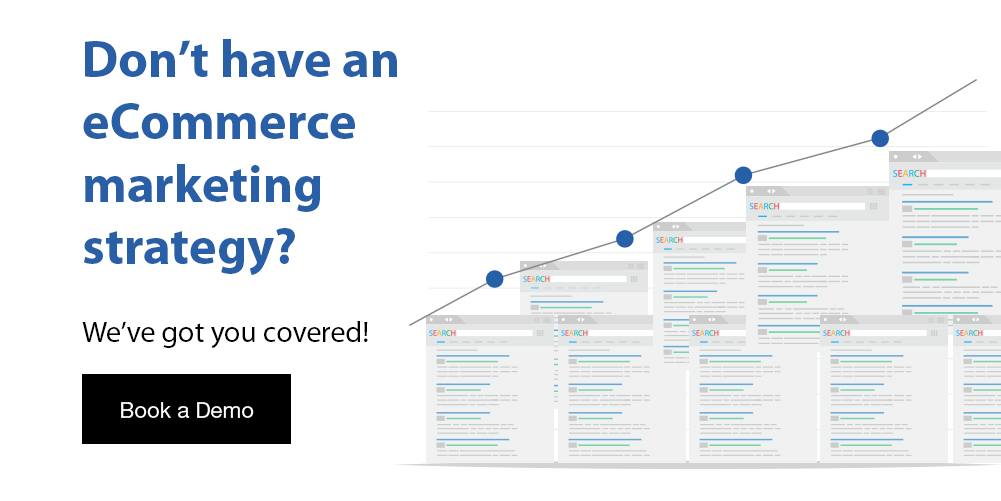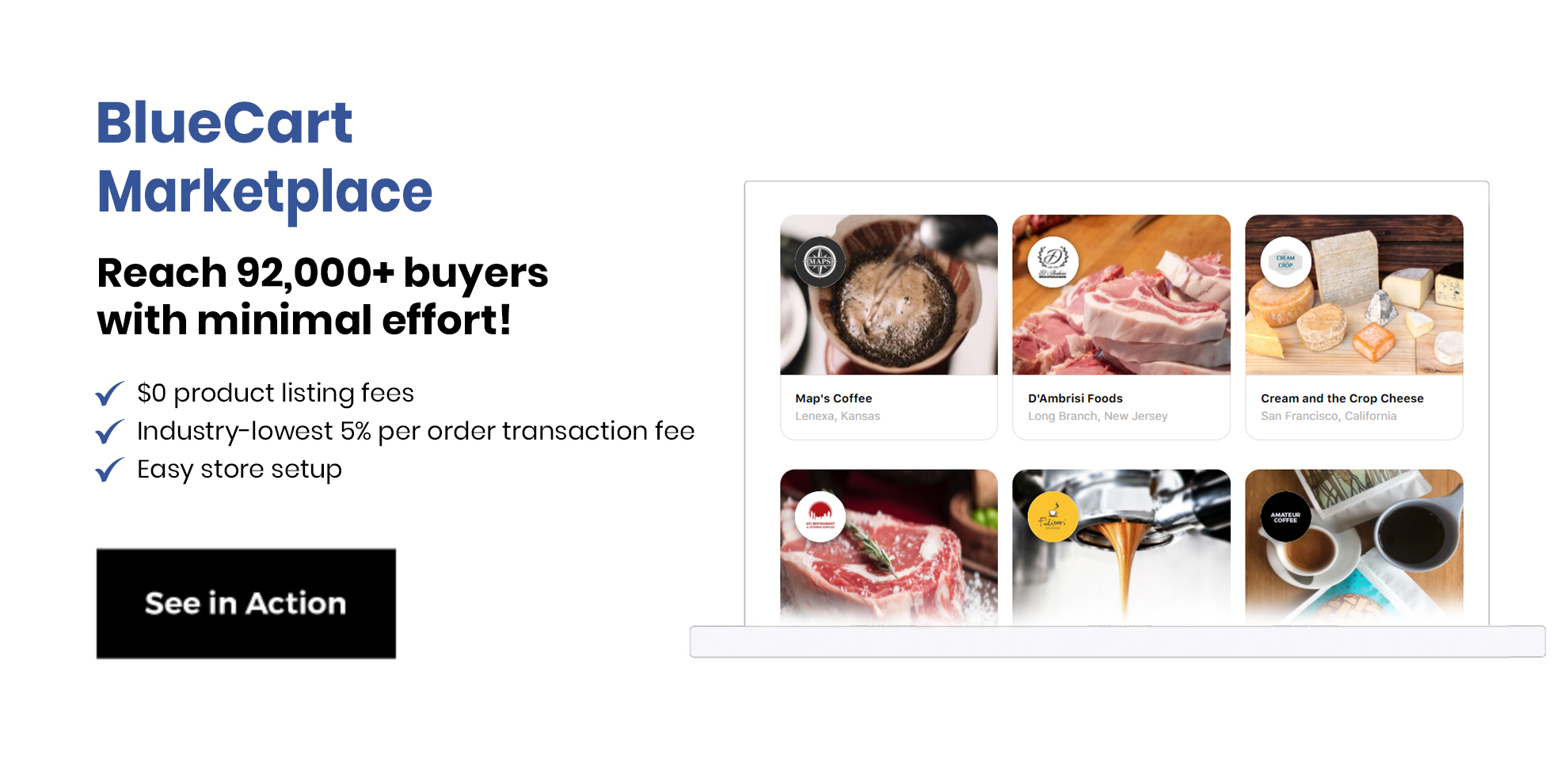When looking for eCommerce website examples, an important first step is conducting an eCommerce competitor analysis. Not only does an eCommerce competitor analysis allow you to see what your competitors are doing right, but it also helps you learn what they’re doing wrong too.
More than this, you’ll be able to come up with strategies that increase eCommerce sales, and are unique to your business alone. However, understanding the process of competitor analysis is not so simple. There are various strings attached, that if not pulled in the right ways at the right times, can have disastrous consequences.
In this article, we’ll teach you the basics of competitive analysis. Afterward, you’ll understand who your rivals are and how to make yourself a worthy opponent. As a business owner, this is key to your success. Keep reading to learn more.

What Is an eCommerce Competitor Analysis?
An eCommerce Competitor analysis is simply in-depth research into your market arena via a wholesale directory. With competitive analysis, you’re able to thoroughly analyze your competition. Moreover, you can gain an inside scoop on current industry dtc trends. This data will assist you in creating promotions, branding, and strategies.
Finally, competitive analysis allows you to tailor it to your specific needs too. You can hone in on proven tactics, or you can stretch your strategies far and wide. No matter how you’re looking to expand, eCommerce competitor analysis can help.
Why Is eCommerce Competitor Analysis so Important?
Have you ever spent hours studying or training for something to no avail? I’m sure at some point any one of you reading this could agree. As humans, we learn best from others. If you’re looking for surefire ways to improve your skills and learn new strategies, who better to learn from than the experts in your field? This is one benefit that comes from competitive analysis. It acts as a shortcut to the best strategies out on the market. Therefore, you’re able to spend less time re-learning skills, and more time innovating.
Here’s some questions to keep in mind when beginning to research:
- How do the results of our actions compare to our competitors?
- Is our measured success good enough to drive new leads, and how can we be better?
It will do you no good to only focus on what you’re doing right. Even strategies that are resulting in success can sometimes still have room for improvement with the right eCommerce skills. Never stop improving, learning, and researching.
Here are some other things you can do to make competitive analysis worth your while:
Set Business Goals
Without a goal, there is no direction for your businesses. In other words, you’re just aimlessly floating around in a severely saturated market. Your goal will keep you on track and ensure you aren't making decisions that amount to nothing for your business.
Competitor analysis has 3 main benefits:
- To help you understand your competition and what tools they’re using
- Learning comparative advantages
- Tracking down approaches to help your marketplace business model stand out
It’ll be in your best interest to achieve all three. More than this, it’s likely that you’ll maneuver through these benefits in order.
However, you’re going to need more than just business goals to see any kind of success. Now is the time to figure out who your competition is.
Competition
The bread and butter of an eCommerce competitor analysis is having someone to analyze--your competition. Your competition is the business you will research as well as the people you’re going to try and beat.
Overall, finding out who your competition is, is quite easy. However, beating them at their own game is not. Don’t dive in just yet. You’ll still need to find out your main target for research. So here is step 1:
- Rank your Competition & Pick the Winners
You’re going to want to rank your competition in similarity to your own business. In order to do so, you’ll want to keep these criterion in mind:
- Competitor Type
- Size/Revenue
- Market Share/brand recognition
- Audience Overlap
- Product Overlap
- Pricing
From there you’ll want to do a Google search and find out what brands and businesses are the most popular in those categories and jot them down.
Once everyone has been ranked, sort the top 5 competitors. After this is complete you’ll then have a full outline of your target competition. You can use this to see what strategies your competition is using and how you may be able to use some of the same strategies yourself. However, what most successful eCommerce companies have in common is the use of 5 main tools proven to garner success. This leads us to step 2: using proven tools.
- Using Proven Tools
The tools many successful companies use are no secret. Every eCommerce business has the same access to these tools as the clothes. The real difference lies in how you use them, and if you use them. Overall, your ranking is what you’ll be looking to improve. The higher you rank the more leads and traffic to your website you create.
- SEO
SEO, or search engine optimization, is one of the best methods for generating consistent traffic. It entails the process of improving website traffic quality through eCommerce keyword research, content marketing, and technical website improvements. More important than simply driving traffic to your site is ensuring that your leads are of sales quality. Not every visitor to your site will be in need of your product or service.
However, the majority of leads that you get should at least want to learn more. SEO can help you do just that. Below you will find some of the most popular SEO tools you can use to look into your competition and grow your lead base.
- SEMrush: This is arguably one of the best SEO tools out there to date. It’s an all in one go-to tool for traffic, visibility stats, and other SEO terms. Moreover, it’ll assist your content team in drafting SEO-friendly content.
- Keywords: We can not stress enough the importance of keyword implementation. Keywords are snippets of ideas and topics that will help define what your content is about. Keywords are usually popular phrases or words that customers will search into search engines. When used correctly, keywords will point customers directly to your website. Platforms like SEMrush are indispensable tools that can help you with keyword research.
- Internal Linking & Backlinking: Internal links are hyperlinks to similar pages or resources within a content piece. An internal link will usually sit on an anchor text directing readers to other useful information on your website. Backlinks are links on other websites that direct back to a similar page on your website. Backlinks are useful for bringing other websites traffic to your own site.
- Social Media Marketing
We can guarantee you that the most popular eCommerce sites out there are using social media. Understandably, it is one of the best ways to reach a large audience with minimal effort. It also answers the question "why is seo important for eCommerce?" In today's world, social media is huge. All it takes is a simple retweet to gain a massive following for yourself. By using competitive analysis you can see what social media and eCommerce marketing strategies your competitors are using and find a way to harness that.
While you’re researching you’ll find that not every platform is used in the same way. So this is important to keep in mind especially when you’re just starting out. Finally, while diving into your competitor's social presence keep these things in mind:
- Post Frequency--What times, days, and hours do your competitors upload content? How often do they upload content? Every day, or every other day? There are peak user periods when it's almost guaranteed that your target audience will see your posts.
- Activity and engagement--Is your competition responding to comments? How do they respond to comments? How are they using their time when they are logged onto the platform?
- Content--What is the content they’re posting like? Do they have professionally tailored photos (you can use seo for eCommerce product pages too), or is their page filled with memes? Is there an aesthetically pleasing look to their page?
Keeping these factors in mind will prove to be useful when creating off page seo for eCommerce. More than anything, social media is for the pleasure of your customers. This is one of many areas where you will need to meet their needs to a tee.
Had Enough Sleuthing?
It’s okay if you’re over feeling like a spy kid. We promise that the information you just learned is more useful than you might think. eCommerce Competitor analysis is not a fast process. Nor is it one and done. You will constantly have to perform copious amounts of analysis if you want to see any success. But, you’re not alone. There are many tools out there that will help make this process simple and easy.
Once you know where to start you can start drafting ideas of what you want your brand to be. Remember, although you are learning useful tactics, it’s important to make yourself stand out. You will need to have a unique approach. Copycatting another business strategy won’t help you. In some cases, it might even hurt you. Look for areas where customer needs aren't being met in the ways they should. Then look for a way your brand can fulfill that need.
Finally, the key to any eCommerce business plan is having a place to start. BlueCart can help! We’re an all-in-one platform that can help you get started in less than a week! We recommend you read our blog to learn more about us. Then get started with a free demo. We have tons of published content to help you start a successful eCommerce business. So put your reading glasses on and get to work!

Frequently Asked Questions About eCommerce Competitor Analysis
What Is the Meaning of Competitor Analysis?
Competitor analysis, also referred to as a "competitive analysis," is a strategy used to better understand your competitor's marketing and SEO strategies. A competitor analysis can help you explore new opportunities for growth.
How Do You Perform a Competitor Analysis?
You perform a competitor analysis by doing the following:
1.) Identify your competitors
2.) Analyze your competitor's online presence
3.) Check eCommerce customer reviews
4.) Talk to your competition's customers
5.) Identify your competition's strengths and weaknesses.
6.) Use proven research tools and SEO strategies.
What Should be Included In a Competitor Analysis?
A thorough competitor analysis should include your competitor's market share, strengths, weaknesses, geography, pricing, and reviews. Once you've completed your analysis, you should be left with a full detailing of your competition, and know where you should start.